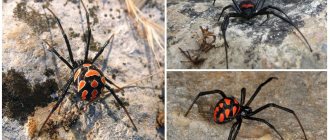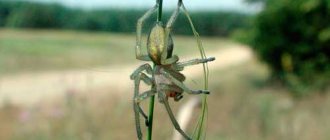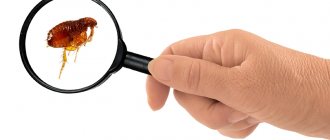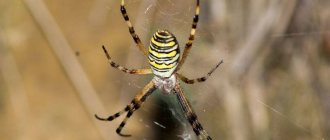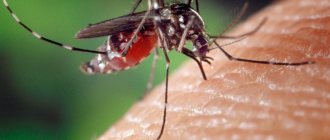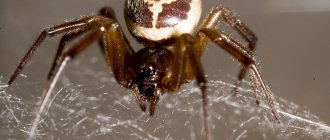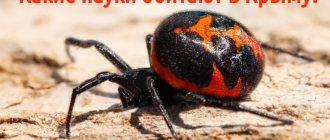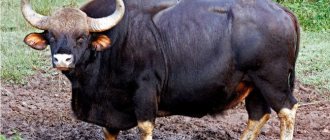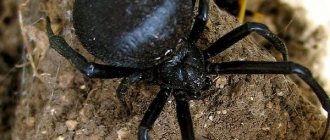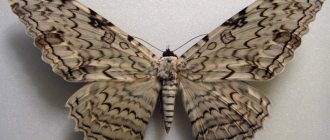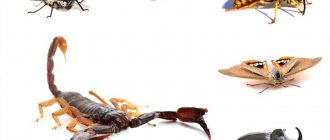Spiders are amazing creatures that evoke fear and delight at the same time. They hold the record for the number of phobias among people and help in pest control. Their venom can be either harmless or deadly. Knowing which types of spiders in Russia are dangerous and which, on the contrary, will help you get rid of phobias and be more careful where required.
- The main families in the country Wolves
- Hunters
- Funnel
- Horses
- Cibeids
- Diggers
- Black widows
- Steatodes
- Knitting spiders
- Orb weavers
- Jumping spider
- Silver spider
- Karakurt
- South Russian tarantula
- Digger spider
Photos and names of common inhabitants
The types of spiders found indoors do not cause concern to anyone. These are gray, black representatives of a large family, harmless, quiet. They hide in corners, weave webs at night, feed on insects, their larvae - moths, caterpillars, etc. Of greater interest are the wildlife inhabitants. They are found in forests, meadows, clearings, and gardens.
Steatoda
When people start talking about poisonous spiders in Siberia, they cannot do without steatoda. The description of the appearance is similar to life-threatening creatures -. But, unlike its relative, the steathod does not pose a danger to humans, it very rarely bites, and prefers to hide by flight.
Steatoda is called false karakurt. with black shiny color. There is a red pattern on the dorsal side of the convex abdomen. In young individuals it is pale and darkens as it matures. The average body size of the female is 2 cm, the male is slightly smaller. Long powerful chelicerae are clearly visible on the head. The pedipalps are more like another pair of limbs and perform almost the same functions.
Steatodes live in forest thickets, are found in houses, and penetrate inside through open windows and cracks in the wall. They are nocturnal and do not tolerate bright sunlight. During the day they hide in shady places and go out hunting at night. Their food is insects, often flies.
Black Widow
Dangerous spiders appear in Siberia when there is hot, dry weather throughout Russia. This species is poisonous, but non-aggressive. It does not attack humans, it bites only for self-defense. Almost never inflicts several bites at once; after the first attack, it tries to quickly hide.
The consequences of a black widow bite depend on the strength of the immune system. Some people get by with a local allergic reaction, while others experience a general deterioration in their health. For abdominal pain, nausea, difficulty breathing, diarrhea, and rapid heartbeat, take antihistamines.
Cross
Spiders living in Siberia are almost everywhere. The natural habitat is a forest, field, edge, meadow, as well as a garden, courtyard, and abandoned buildings. A small spider, up to 2 cm in size including the leg span. A distinctive feature of all spiders of this species is the presence of a characteristic pattern in the form of a cross on the upper part of the abdomen.
They bring many benefits by destroying agricultural and forest pests. They are active at night. At night and during the day they sit motionless in its center, waiting for prey. Or they hide in a secluded place, stretching out a signal thread.
Edema, swelling, and a red spot appear at the site. In young children, people with weak immunity, and a tendency to allergies, nausea, abdominal pain, dizziness, rapid heartbeat, and weakness occur. The condition returns to normal after a few days, bites on the skin disappear within 2 weeks.
Black fathead
Spiders of western Siberia with unique, bright colors. This is one of the few species where the male is more beautiful in color than the female. The cephalothorax is velvety black, the legs are long and powerful with white stripes. The abdomen is convex, red with four large circles. The spider is popularly called a ladybug. The female is larger, but not so beautiful - the cephalothorax, abdomen are black, sometimes there are yellow spots.
Lives in burrows, prefers dry areas and sunny meadows. Its favorite food is beetles, but it does not disdain other insects. The black fathead does not have an aggressive disposition; when it sees a person, it behaves calmly and quickly crawls away to a safe place. Bites in defense of his own life. Pain, numbness, redness, swelling, and swelling appear at the site of the bite. All this goes away within a few days.
Spiders living in Siberia do not pose a danger to humans; they bring many benefits by eating pests of forests, gardens, and fields.
Spider (Araneae) belongs to the phylum arthropod, class Arachnida, order Spiders. Their first representatives appeared on the planet approximately 400 million years ago.
Harmless arachnids of the Moscow region
Non-venomous spiders include those species whose venom is absolutely non-toxic to humans and only affects insects. Several such arthropods live in central Russia: brownies, knitting spiders, etc.
House spiders
The most common spiders around the world are spiders, which got their name from their close proximity to people's homes. Belong to the family. They are outbuildings in the country or in the city. It has the shape of a funnel; it begins its weaving in a dark corner under the ceiling or even behind a closet.
Interesting!
The “house elf” itself usually sits in the middle, waiting for prey to arrive or run in, after which it quickly runs up along the threads and deals with the insect.
Distinctive features of the house spider:
- female size – 12 mm, male – up to 10 mm;
- the chitinous cover is colored in gray-brown shades;
- there is a pattern of brown spots on the back;
- The paws are 2 times longer than the body.
Knitters
This species lives only in the natural environment, avoiding encounters with humans. Knitters weave huge circular webs designed to catch only one type of insect -. For the spider, they are the most favorite treat.
Differences from other types of spiders:
- the body has an elongated shape;
- the size of females is 10 mm, males are smaller;
- legs are very long;
- the jaws (chelicerae) are covered with projections.
Interesting!
Knitters have an interesting feature: when in danger, they stretch their legs along the body, visually turning into a small straw, almost invisible against the background of leaves and trees. When touched, the spider falls down and runs away.
Micromat greenish
This type of spider lives in forests, settling among grass and plants. Its bright color helps it hide among the green parts of plants. The dimensions of micromats are small - the largest barely reaches 1 cm. Their poison is non-toxic and does not pose a danger to people.
Tarantula spider – Theraphosidae
The tarantula spider is perhaps the largest spider in the world, or rather the family of tarantula spiders (Theraphosidae). Some members of this family can reach 30.5 cm in leg span, such as the king baboon, black tarantula and purple tarantula. The body of tarantulas is always densely covered with long and short hairs. Body color can be either gray-brown or bright colors (red, blue, red). Tarantulas live in countries with hot climates (Africa, South America, Oceania, Australia). These spiders inhabit abandoned nests of birds and rodents or dig holes near tree trunks. They are active mainly in the evening. Then they go hunting or catch a prey running nearby. Tarantulas feed on insects, small birds and rodents. These spiders breed in late summer. The female lays eggs in a cobweb cocoon, which she carries with her and does not lose sight of. They protect the offspring, so that the spiderlings that emerge from the cocoon sit on the mother’s abdomen for some time. But soon they begin to lead an independent life. The tarantula's venom paralyzes the victim and decomposes its entrails, then the spider sucks out the contents of the victim's body. For humans, the tarantula's venom is not dangerous, but quite painful. The bite site bakes, hurts and swells, sometimes turning yellow. But these symptoms go away after a few weeks.
Types of spiders, names and photographs
Scientists have described more than 42,000 species of spiders. About 2,900 varieties are known in the CIS countries. Let's consider several varieties:
Blue-green tarantula (Chromatopelma cyaneopubescens)
one of the most spectacular and beautifully colored spiders. The tarantula's abdomen is red-orange, its limbs are bright blue, and its carapace is green. The size of the tarantula is 6-7 cm, with a leg span of up to 15 cm. The spider’s homeland is Venezuela, but this spider is found in Asian countries and on the African continent. Despite belonging to tarantulas, this type of spider does not bite, but only throws special hairs located on the abdomen, and only in case of severe danger. The hairs are not dangerous for humans, but they cause minor burns on the skin, similar in effect to nettle burns. Surprisingly, female chromatopelma are long-lived compared to males: the lifespan of a female spider is 10-12 years, while males live only 2-3 years.
Flower spider (Misumena vatia)
belongs to the family of side-walking spiders (Thomisidae). Color varies from completely white to bright lemon, pink or greenish. Male spiders are small, 4-5 mm long, females reach sizes of 1-1.2 cm. The species of flower spiders is distributed throughout European territory (excluding Iceland), and is found in the USA, Japan, and Alaska. The spider lives in open areas with an abundance of flowering herbs, as it feeds on the juices of those caught in its “embraces” and.
Grammostola pulchra
Sidewalk spiders (crab spiders) spend most of their lives sitting on flowers waiting for prey, although some members of the family can be found on tree bark or forest floors.
Representatives of the family of funnel-web spiders place their webs on tall grass and bush branches.
Wolf spiders prefer damp, grassy meadows and swampy wooded areas, where they are found in abundance among fallen leaves.
The water (silver) spider builds a nest underwater, attaching it to various bottom objects with the help of webs. He fills his nest with oxygen and uses it as a diving bell.
Who should you be wary of?
Other arachnids also live on the territory of Russia - their venom is very toxic and delay after a bite is fraught with serious health consequences. And in order to protect yourself and know in which cases you should immediately seek medical help, it is advisable to know such representatives of the spider kingdom “by sight.”
So, next we propose to find out the names, and also consider the description of poisonous spiders living in Russia.
Cross spiders
The diet of spiders of this species includes mainly flying insects: hornets, flies, butterflies, mosquitoes, bumblebees and bees. Hunting occurs with the help of a web. The crossfish immobilizes caught prey with poison, entangles it in a web and injects digestive juices into the wound. After some time, it eats the partially digested contents of its victim. If the spider is not hungry at the moment, then it hangs the prey on the edge of the trapping net in reserve.
These spiders are distributed throughout central Russia. They are often found in spruce, beech and pine forests, as well as in raised bogs, less often in gardens, arable lands and meadows.
- females are approximately twice as large as males with body sizes of about 20-25 mm;
- the main color depends on the ambient light; on the upper side of the abdomen there is a pattern in the form of a cross;
- the body is covered with a layer of waxy substance necessary to prevent moisture evaporation;
- The cephalothorax is covered with a dense “shield”, on the front of which there are 4 pairs of eyes.
As a result of a bite from a cross, an infection can occur in the wound, so it is imperative to seek medical help as soon as possible.
Hyracantidae
Chiracantids belonging to the species Cheiracanthium punctorium are dangerous for humans. They can be found in grass and bushes. These creatures have won the title of the most poisonous spiders in central Russia.
This is interesting! Some species of chiracandids are characterized by matrifagy - hatched spiderlings eat the female who protects them!
Chiracantids do not weave trapping nets, as they are wandering hunters. They are active exclusively at night. They react to the prey tactilely - when the insect touches the spider’s legs, it attacks it with one sharp jump. The diet usually includes leafhoppers, caterpillars, moths, aphids, grasshoppers and some types of mites.
This is interesting! When studying chiracantids in laboratory conditions, it was noticed that they avoid any contact with ants and parasitic wasps!
- the covers are colored yellow, light brown, sometimes greenish;
- body size ranges from 5 to 15 mm;
- abdomen oval, slightly pointed at the end;
- the front pair of legs are approximately twice as long as the body.
After a bite from a Hyracantida spider, intense burning pain occurs in the affected area, which soon spreads over almost the entire corresponding segment of the limb. In this case, there is no itching or “locking” of the muscles. After a few minutes, the lymph nodes located on the way from the bite site begin to “ache” and swell. A little later, swelling develops in the affected area and mobility is impaired. Sometimes there is difficulty breathing. The pain goes away after about 10-20 hours, local symptoms - after 1-2 days.
Karakurt
This is the most poisonous spider living in Russia. Karakurt belongs to the family of black widows. Its body is painted black and has 13 red spots with a white border. Adult individuals no longer have spots - their body is usually painted uniformly in a glossy black color. The body size of a female can be from 10 to 20 mm, males are much smaller - their size usually does not exceed 7 mm.
Poisonous spiders such as karakurts are found in the following regions of Russia:
- Saratovskaya;
- Kurganskaya;
- Orenburgskaya;
- Rostovskaya;
- Novosibirsk;
- Volgogradskaya.
Despite the fact that karakurts are considered the most dangerous spiders in Russia, they do not attack people without reason, but bite solely for the purpose of self-defense. After a bite, the poison acts immediately and within a quarter of an hour the pain spreads throughout the body. Particularly severe pain occurs in the abdomen, chest and lower back. At the same time, a strong tension in the abdominal muscles is felt. The victim may experience shortness of breath, tremors, increased heartbeat, increased pulse rate, headache, nausea, dizziness, pallor or hyperemia of the skin.
In Russia, antikarakurt serum is used to treat the consequences of the bite of these poisonous spiders.
In hot years, karakurts are also found in the northern regions, for example, in the Moscow region; sometimes they rise to much higher latitudes, where they can live until winter
Tarantula Spider Conservation
Photo: Tarantula spider from the Red Book
The South Russian tarantula, which has the second name Mizgir, is listed in the Red Book of the Republic of Tatarstan and classified as category 3 of species that are reducing their numbers; in the Red Book of Udmurtia, where it was assigned category 4 with an uncertain status; Red Data Book of the Nizhny Novgorod Region in category B3.
Limiting factors are active human agricultural activity, natural enemies, destruction of characteristic habitats, loss of dry grass, changes in groundwater levels, trampling of wet biotopes, military operations in semi-deserts, and an increase in plowed areas.
The species is protected by the Zhigulevsky Nature Reserve, the Prisursky Nature Reserve on the territory of the Batyrevsky site and the Samarskaya Luka National Park. Conservation measures include educational work among residents to limit the catching of arthropods. There are farms for breeding tarantulas in Mexico.
Conservation measures that need to be implemented include identifying the arachnid's natural habitats and providing the protection required for the species. The dry grass has stopped falling in the spring. Organization of NP "Zavolzhye". Restriction or cessation of economic activity, limitation of chemicals for spraying plants, suspension of livestock grazing.
The tarantula spider is not an aggressive animal. He will prefer to escape than attack a person. An attack can be provoked by the actions of people who touch the spider or get too close to the hole. Fortunately, the bite of a predator is comparable to a bee sting, and the blood of the spider itself can best neutralize the effect of the poison.
Tags:
- Entelegynae
- Lycosoidea
- Neocribellatae
- Opisthothelae
- Panarthropoda
- Araneomorph spiders
- Bilaterally symmetrical
- Animals of Australia
- Animals of Australia and Oceania
- Animals of Austria
- Animals of America
- Animals of Bolivia
- Animals of Brazil
- Animals of Greece
- Animals of Eurasia
- Animals of Western Siberia
- Animals of Iran
- Animals of Spain
- Animals of Italy
- Animals of the Caucasus
- Animals of the Red Book
- Animals of the Red Book of Russia
- Animals of Crimea
- Animals of the forest-steppe
- Meadow animals
- Animals of Mongolia
- Animals starting with the letter P
- Animals starting with the letter T
- Animals of the Nizhny Novgorod region
- Animals of the fields
- Semi-desert animals
- Animals of Portugal
- Desert Animals
- Animals of deserts and semi-deserts
- Animals of Russia
- Animals of Romania
- Animals of North America
- Animals of Siberia
- Animals of the steppe
- Animals of the Russian steppe
- Animals of the Subtropical Zone of the Northern Hemisphere
- Animals of the Subtropical Zone of the Southern Hemisphere
- Animals of Tatarstan
- Rainforest Animals
- Rainforest Animals
- Animals of the Tropical Zone of the Northern Hemisphere
- Animals of the Tropical Zone of the Southern Hemisphere
- Animals of Turkmenistan
- Animals of Ukraine
- Red Book of the Nizhny Novgorod Region
- Red Data Book of the Republic of Tatarstan
- Red Book of Tatarstan
- Red Book of Udmurtia
- Shedding
- Dangerous animals of Australia
- Dangerous animals of Russia
- Dangerous spiders
- Dangerous spiders in Russia
- Spiders
- Spiders of Russia
- Wolf spiders
- Protostomes
- Rare animals of Russia
- The most disgusting spiders
- The most dangerous animals in Russia
- The most dangerous spiders
- The most dangerous spiders in Russia
- The most terrible spiders
- The most poisonous spiders in Russia
- Scary spiders
- Tarantulas
- Cheliceraceae
- Arthropods
- Eukaryotes
- Eumetazoans
- Poisonous animals of Russia
- Poisonous spiders in Russia
- Poisonous spiders of Crimea
Other poisonous animals of Russia
On the territory of the Russian Federation you can also find other poisonous creatures, for example, scorpions and frogs. Poisonous scorpions live in the Lower Volga region and Dagestan. They attack a person only in case of... The scorpion's venom is on its tail. Female venomous scorpions are especially dangerous. Their poison can cause death in humans.
Other poisonous animals living in Russia are fire-bellied frogs. They can be found in the Krasnodar region. These frogs differ from ordinary frogs in having an orange speckled abdomen. They secrete their poison through the skin.
All spiders are essentially predators; among them there are also poisonous ones, which are worth knowing and fearing! In this article we will provide brief information about spiders that are worth paying special attention to. KARAKURT. The most dangerous spider in Russia, of course, can be called the Karakurt; it lives mainly in the south of Russia (for example, in the Crimea), but like other southern spiders it can migrate to other regions during abnormal heat. Karakurt (from the Turkic: “kara” - black and “kurt” - worm) is the owner of a very dangerous poison that can lead to death if help is not provided in time. A karakurt bite causes unbearable pain spreading throughout the body
Only a serum developed against the venom of these spiders can save the bitten person. It is worth saying that only female karakurts are dangerous, which can be identified by a mark on the abdomen made in the form of a red hourglass.
SOUTH RUSSIAN TARANTULA
(mizgir) is a large spider whose venom is not life-threatening. However, its bite causes quite severe pain and can also lead to allergic reactions and the appearance of a tumor at the site of the bite.
HEIRACANTIUM
- is the most poisonous spider in central Russia. Usually hidden under the foliage of bushes and small trees. Attacks when there is danger in self-defense. After a bite, a person feels burning pain, nausea, vomiting, weakness, body aches, body temperature rises sharply, and a headache. The bite site may turn red or even blue and, after some time, becomes covered in blisters. Symptoms usually disappear 2 - 3 days after the bite, the mark on the skin remains longer. If the condition of the bitten person worsens, it is necessary to consult a doctor as soon as possible.
SOLFUGA
- aka salpuga or phalanx. In Russia it is found on the southern coast of Crimea. These creatures are active at night and have a high speed of movement. They can bite in self-defense. The bite is not poisonous, but is quite deep and causes infection, as a result of which the wound begins to fester significantly. Therefore, you should suck out the bite site, spitting out the infected saliva, and then treat the wound with an antiseptic; then it is recommended to lubricate the bite site with a gel (ointment) containing an antibiotic. Well, don’t forget about the doctor; if possible, be sure to seek help.
SPIDER - NETWORKER
- belongs to the subspecies of the cross, but it is much smaller than the usual cross, and its web is more chaotic. The bite is dangerous not because of the spider's venom, but because of the possible infection, so it would be a good idea to see a doctor.
PURSE SPIDER
(bagworm) is an aggressive spider, you can stumble upon it in the Rostov and steppes of the Volgograd region. The bite causes severe pain, affecting large areas of the human body.
FALSE BLACK WIDOW
— Acute pain, fever, weakness - all this will last from several hours to 2 days! Widespread in Dagestan, they like to invade the homes of local residents.
BLACK FASHHEAD
- will also give a feeling of pain for about a day. This spider bites quite rarely, the main thing is not to pick it up.
ARGIOPE
- a very dangerous spider; an allergic reaction to a bite can provoke severe abscesses and even lead to tissue necrosis.
SURVIVE.RU
Post Views:
59 319
Spiders are arthropods that belong to the class of arachnids. Representatives of this class, today, there are about 40 thousand species. They differ from each other in their way of life, appearance, and type of nutrition. There are a wide variety of spider species in nature: the smallest and most harmless spiders (0.37 mm), as well as the most dangerous spiders and even the most poisonous spiders in the world (up to 25 cm). And in this article we will tell you about several amazing and interesting species.
Arthropods of the steppe regions
Among the spiders in southern Russia there are truly poisonous species, the bite of which can lead to death:
Regarding Russia, the cellar spider is a spider that lives in the Crimea and the Caucasus. Although the distribution area of this animal is much wider, its main habitat is to the west.
Eresus
Black eresus (black fathead) is an inhabitant of the steppes. It can be found among the spiders of the Volga region, Tatarstan, and Kalmykia. Recently discovered in Crimea. A spider bite is painful.
The spider has a red abdomen with black dots, which is why it received the popular name “ladybug spider.” But only males have this color. Females are completely black.
Karakurt
Karakurt is not the largest spider in Russia, but it is the most dangerous fart in the Russian expanses. Contrary to the cliché that these animals are found in the Karakum Desert, in fact their range is much wider. Karakurts are found among the spiders of Crimea, Tatarstan, Stavropol Territory and other relatively warm regions. The range is limited to the steppe zone. In colder forest areas, karakurts do not take root, although the spider was also found in the Altai Territory. But with a high degree of probability he got there by accident with the help of a person and is unlikely to survive the winter.
Spiders
Arthropods belonging to the Arachnida class are represented in Siberia by a fairly large variety of species that differ in color and behavior, as well as habitats.
Steatoda
The false karakurt belongs to the category of large-sized spiders and is distinguished by its shiny black color with a red pattern. The average body size of an adult female is 20 mm, and the male is slightly smaller. In the head region there are clearly visible and very long chelicerae. The spider is an inhabitant of the forest thicket, but may well be found in a human home. Steatoda is nocturnal.
Black Widow
A dangerous spider belongs to the category of poisonous but non-aggressive species, and the consequences of a bite directly depend on a person’s immunity. The appearance of the black widow is very impressive. The spider is black and shiny in color, has a convex abdomen and a red spot that resembles an hourglass shape. Representatives of the species are characterized by long and powerful limbs, as well as medium-length chelicerae.
Cross
A widespread species inhabiting forests, fields, forest edges, meadows, as well as gardens, courtyards and abandoned buildings. The small spider has a characteristic pattern in the form of a cross, which is located at the top of the abdomen. Crosses are active only in the dark, and during the day they prefer to hide in secluded places. The spider's venom paralyzes prey instantly, and the bitten insect dies within a few minutes.
Black fathead
The spider is distinguished by a unique, quite bright color, has a black and velvety cephalothorax, as well as long and powerful legs with white stripes. The abdomen is convex, red with four large circles. Females of this species are larger than males. The black fathead settles in burrows, preferring dry areas and sunny meadows. The spider does not attack people, and bites only for the purpose of self-defense.
Tarantula
A large poisonous araneomorphic spider from the family of wolf spiders has been actively exploring new territories, including Siberia, in recent years. Representatives of the genus have a very highly developed sense of smell and good visual apparatus. The upper part of the cephalothorax is equipped with eight eyes. Tarantulas do not weave catching nets, and the web is used only to cover the walls in the burrow and when spiders make a special egg cocoon.
Fire toad's lifestyle
The red-bellied firebird is common in Europe.
These frogs prefer a mostly aquatic lifestyle. But representatives of the species can also be found on land, although only in damp places. Red-bellied toads live on flat terrain - in steppes, mixed and deciduous forests. As a habitat, they choose reservoirs with a clay bottom, in which the water stands and warms up well - these are small lakes, ditches, swamps, ponds and rice paddies. Although they prefer a water temperature of +2 degrees, they can be active at temperatures from +10 to +30.
As a rule, red-bellied toads are not numerous, but in certain places they accumulate in large quantities. Despite the fact that these frogs are attached to water, they can move over a distance of about a hundred meters when searching for a new body of water. But they usually travel at night, when air humidity is high.
Hornets
Hornets are considered the largest wasps in Europe. The working individual of the common hornet reaches a length of 20-25 mm, and the uterus reaches up to 35 mm. Again, only female hornets are dangerous to humans; males do not even have a sting.
Hornet venom has a strong allergenic effect. It contains histamine and some toxins that promote the additional release of this substance from the cells of the affected tissue. Histamine accelerates allergic reactions, so even for people who are insensitive to the components of the poison, a hornet bite will be painful. Hornet venom contains a large amount of acetylcholine, which causes severe irritation of nerve endings and acute pain at the site of the bite.
The reaction to a hornet attack varies greatly from person to person. For some, the allergy manifests itself only as swelling, while for others the temperature may rise, headache and heart rate increase. In rare cases, anaphylactic shock and even death can occur.
Unlike a bee, a hornet can use its sting many times; after one bite, it retains a sufficient amount of poison, the supply of which is gradually replenished.
Horseflies
One of the most annoying and dangerous insects for humans are horseflies. Despite the name, they see their prey clearly; horse flies are attracted to dark colors of clothing, the smell of sweat and movement.
It is not so easy to protect yourself from horse flies; they are fast and maneuverable, reach speeds of up to 60 kilometers per hour and usually fly in droves. In order to get enough, the female horsefly can fly around several victims. Horseflies are dangerous because they can carry the pathogens of anthrax, filariasis, tularemia and other diseases on the surface of the body.
The bites of these insects themselves are painful and dangerous. The female horsefly secretes saliva containing toxins and anticoagulants into the bite site. They prevent blood clotting and cause prolonged bleeding from the wound, which does not heal for a long time. A bonus to a horsefly bite is that a non-healing wound attracts other blood-sucking insects, and toxins in the saliva can lead to allergic reactions, redness and painful swelling of the skin.
False black widow
Common spiders of the south of Russia. The venom of a black widow is stronger than that of a rattlesnake. One of the most dangerous spiders on the planet. A relative, the false black widow, lives on the territory of the Krasnodar Territory.
Outwardly it differs from its deadly relative in that it is lighter in color. The characteristic hourglass pattern is not red, but pink. Belongs to the karakurt family. The size of females, together with the leg span, reaches 4 cm, males are half that size. They are nocturnal and weave strong fishing nets.
The false black widow will not bite unless touched. It sits calmly in the center of the homespun cloth, waiting for the victim. However, he often travels around the area, choosing hot spots. While traveling, it can crawl into a tourist’s belongings, vacationers’ shoes, house, or apartment.
The bite of the false black widow is poisonous and painful, but not fatal. In young children and people prone to allergies, a deterioration in well-being may follow, including swelling of the larynx and difficulty breathing. In this case, medical attention is required.
The list of spiders in the Krasnodar region goes on, but none of them are dangerous to humans. Harvesters, cross spiders, side walkers, and house spiders do not pose a threat to people.
Other poisonous spiders of Russia
In the vastness of the Russian Federation, you can meet other representatives of arthropods that are capable, if not of killing a person with their bite, then of causing a lot of painful sensations.
Bagworm (bag spider). This spider is aggressive enough to attack even in the absence of direct danger. The bite is not fatal, but is accompanied by very severe pain, which can spread very quickly throughout almost the entire body.
False black widow. First of all, it is dangerous because it often gets into living quarters. After the bite, acute, prolonged pain, weakness and fever are felt. Symptoms may last up to two days.
As you can see, poisonous spiders are far from uncommon in Russia, but only the female karakurt should be greatly feared. You can easily cope with the consequences of bites from other arachnids on your own. However, seeing a doctor is highly recommended.
Far East
Among the common spiders of the Far East, two other species of atipus stand out. This family of digger spiders is small and has only 32 species. There are only 4 species in Russia. In the Far East, 2 out of 4 species of atipus live. The animals are not dangerous to humans, but due to their long chelicerae they can inflict a painful bite.
Arthropods are not aggressive individually, but they live in colonies and attack if the family is threatened. If only one individual is in danger, the animal folds its paws and pretends to be dead.
Jumping spiders – Salticidae
Jumping spiders or jumping spiders are a family of araneomorphic spiders that includes 610 genera and 5,800 species. They live in tropical forests, deserts, semi-deserts, temperate forests and mountains. These are small spiders, up to 2 cm long. The body is pubescent. These spiders have well-developed vision. They have 8 eyes, thanks to which they see 360º degrees. Jumping spiders differ from each other in body shape, color and range. There are such types of jumping spiders: - the golden jumping spider lives in the south-east of Asian countries, and is characterized by a long abdominal part and a large first pair of legs. The body has a very peculiar golden color. The length of the male rarely exceeds 76 mm, and the females are larger;
- Himalayan jumping spiders are the smallest spiders. They live high above sea level, in the Himalayas, where their only prey is the occasional small insect that is blown onto the mountain slopes by strong winds;
- The green jumping spider lives in New Guinea, New South Wales and Queensland. Often found in Western Australia. The male has a very bright color, and his body is decorated with long white “whiskers”;
- The red-backed species of jumping spider settles in relatively dry areas. The red spider is often found on coastal dunes or oak woodlands in North America. These red spiders are unique in that they are able to build tube-like silken nests under rocks and on the surface of vines;
- the species Hyllus Diardi has a body up to 1.3 cm long. Compared to other types of jumping spiders, it does not weave a web, therefore, to catch prey, it attaches a silk thread to some support, and then jumps from such a peculiar “bungee” onto its victim;
- the ant jumping spider looks very similar to an ant and is most often found in tropical zones from Africa to central Australia. Body color can vary from light yellow to black.
Jumping spiders are unique in that they can jump long distances (up to 20 times their body size). Before jumping, they cling to the substrate with a web (thus securing their jump), then push their body out with their hind legs. Jumping spiders are absolutely harmless to humans. They have poison, but it has no effect on humans, and their bite is almost painless.
White karakurt - Latrodectus pallidus
Image of white karakurt
This is a white spider, with long legs and a round abdomen. The abdomen is white or milky in color, with 4 indentations. The legs and cephalothorax are yellow or light brown. The white spider has a body 10-20 mm long. Females are larger than males. White spiders weave a web in the shape of a cone, which is connected to a trapping net. They live in North Africa, the Middle East, Iran, Kazakhstan, Turkmenistan and Azerbaijan. The white karakurt spider is not aggressive, but its poison is toxic and can cause complications. Children and the elderly are most susceptible to the effects of the poison. Toxicological studies have shown that the poison of the white karakurt is similar to the poison of the karakurt (Latrodectus tredecimtugattus). If you are bitten by this spider, you should consult a doctor.
Goliath tarantula - Theraphosa blondi
This giant spider is considered the largest in the world. The span of its legs reaches 30 cm. In Venezuela (1965), one of the representatives of this species was listed in the Guinness Book of Records. The span of its legs was 28 cm. It is believed that the leg span of Heteropoda maxima is even longer, up to 35 cm. But this species has a small body and long thin legs. So he is small compared to the massive goliath. The body of the goliath is light or dark brown, densely covered with short hairs. They live in burrows, the entrance of which is covered with cobwebs. This huge spider lives in the tropical forests of Suriname, Guyana, Venezuela, and northern Brazil. It feeds on various insects, rodents, frogs, lizards and even snakes. The life expectancy of females is 15-25 years, males - 3-6. These spiders are amazing in that they are able to make a hissing sound by rubbing their chelicerae; the ability to shake hairs from the abdomen into the enemy’s face, which cause swelling of the mucous membrane. The goliath tarantula also has large and sharp chelicerae (claws), with which it can bite very painfully. Their venom is not dangerous to humans; the symptoms are the same as after a bee sting.
Families
In Russia the following families of arthropods are represented:
These are not all species of spiders living in Russia, but a significant part of them. Most arthropods are able to live in any conditions. Photos and names of cosmopolitan spiders can be found in the description of the fauna of any of the regions of Russia. Some prefer a dry, hot climate and live in the southern part with an abundance of steppes. Others need water or damp places; such arthropods are usually found in the central part, where there are many forests with lakes and swamps.
